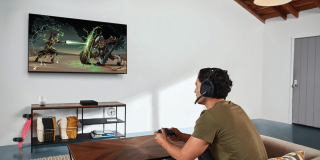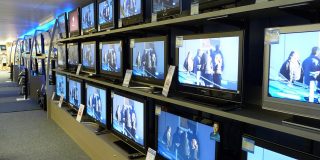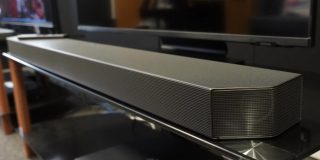How to Determine What TV Size You Need
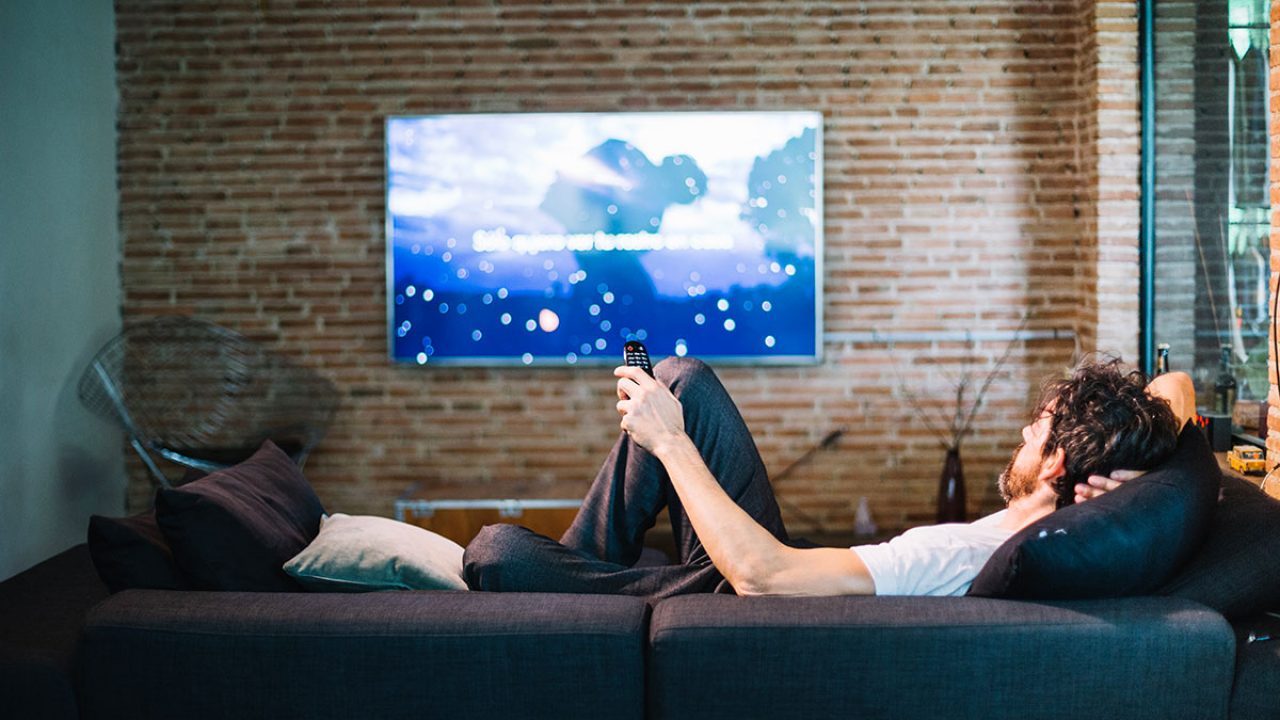
If you’re looking to get a new TV, many people first think about size, and the next is usually resolution. However, bigger isn’t always the better choice since you can get eye strain from sitting too close. There are indeed ways to calculate how large your next TV should be, but it’s not always straightforward.
Below, you’ll find out what factors are involved when choosing between 50 inches or 60 inches. It’s more than just your distance from the screen. Read on for all the details.
It’s Not Clear-Cut
The size you want isn’t always apparent, and following formulas may not always work out for your situation. For example, your living room can be large, but maybe you want to sit closer to the screen. That will require a different formula or TV size.
Generally, the larger your TV is, the farther away you want to be. That will prevent eye strain and fatigue, while also letting you see the whole picture.
Room size isn’t the best thing to base your calculations on either. We recommend using the distance between your couch or sofa and where the TV is supposed to be. That way, you can find out exactly how large the screen can be.
Below are the crucial factors for calculating your screen size.
Common TV Sizes
TVs are made in various sizes, which is the diagonal measurement of the screen from corner to corner. And some TVs aren’t high-end products. Therefore, you may have to dig deeper to find what you like.
- 32 inches
- 43 inches
- 50 inches
- 55 inches
- 65 inches
- 75 inches
- 80 inches
- 85 inches
- 95 inches
- 100 inches
Most people have something ranging from 43 to 75 inches since these are usually more affordable or just large enough for most living rooms. You’ll find that smart TVs and gaming TVs are usually made in these measurements.
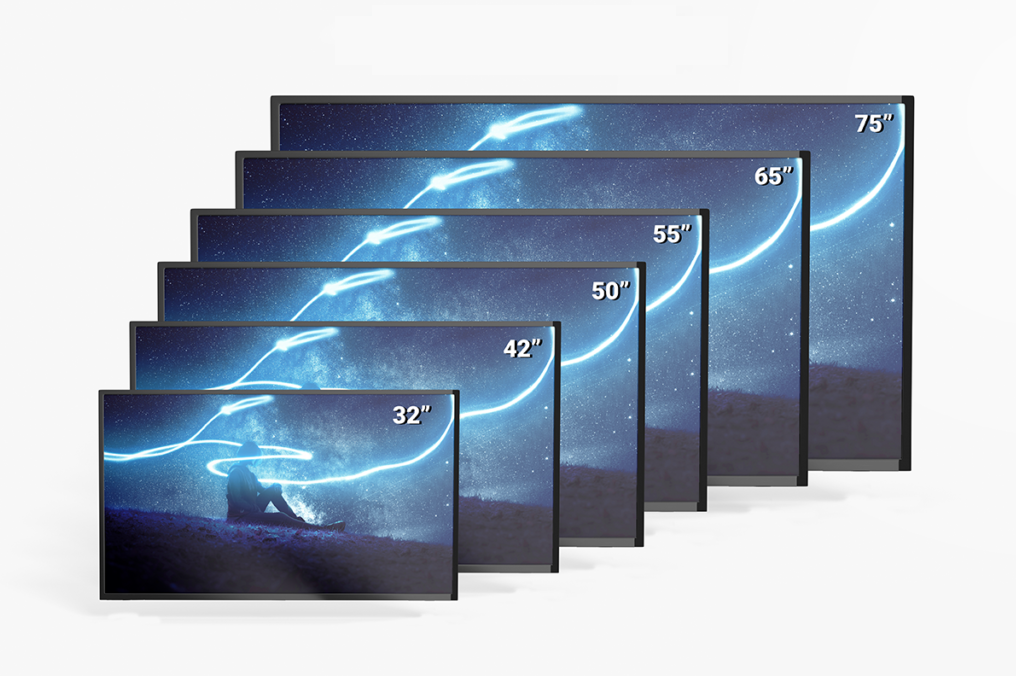
However, TVs measuring more than 85 inches tend to be flagship models from well-known manufacturers, like Samsung or LG. These are usually costly to own, even when the prices of larger, high-resolution TVs are going down. Flagship models are expensive, and many people struggle when buying large TVs with the fewer choices available.
Currently, the most popular TV size in the U.S. is the 65-inch TV. Previously, the popular size was 40 inches, but the change is a sign that today’s consumers are buying more oversized products and tend to be more satisfied with a larger screen.
Technological advancements also mean that newer products are much easier to adjust, and have become thinner and lighter. Many homeowners can now get one without sacrificing space.
Distance From Sitting Position
Before everything else is considered, you need to know how far you’ll be when sitting down to watch a show. The larger your TV is, the farther away the optimal viewing distance becomes. Otherwise, you can cause problems with your eyes.
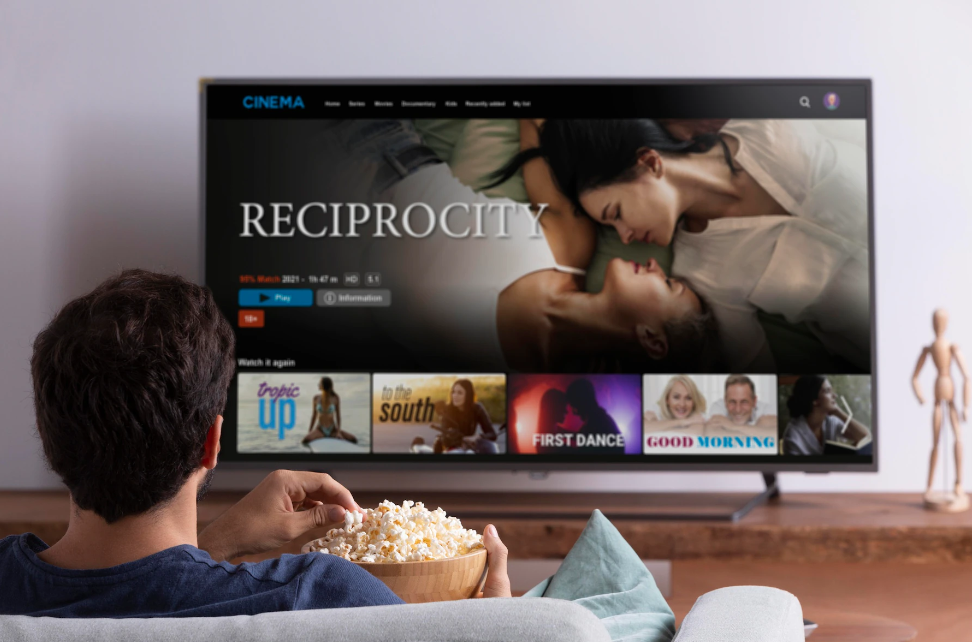
Eye fatigue and strain are caused by your ocular muscles struggling to take in the picture, especially by sitting close to the screen. Some symptoms that can occur are:
- Headaches
- Soreness
- Difficulty focusing on other objects
- Dry eyes
- Watery eyes
The eye will try to say open and wider to compensate for always focusing on small objects. Unfortunately, that also means your eyes don’t close as much.
Therefore, you need to find the perfect distance for a TV set.
Another thing you ought to know is a minimum viewing angle.
The Society of Motion Picture & Television Engineers (SMPTE) recommends a minimum of 30 degrees. However, Samsung and THX prefer a 40-degree arc, which is better at providing a theater experience. These are based on FHD TV technology.
Screen Resolution
There are four main screen resolutions for TVs, and the higher the number, the smaller the pixels are. Today, you can get TVs at these resolutions.
- FHD (1,920 x 1,080p)
- 2K (2,560 x 1,440p)
- 4K (3,840 x 2,160p)
- 8K (7,680 x 4,320p)
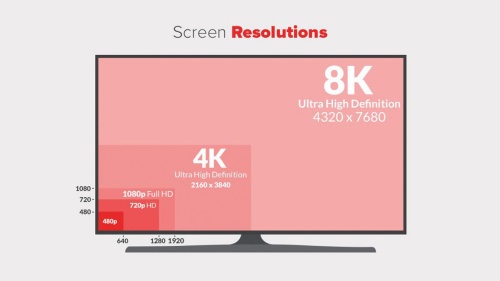
2K TVs aren’t as common as they used to be, but they’re an excellent middle ground for people who want more than FHD TVs can offer but not as much as 4K TVs. You’ll save some money, though you’re not likely to get 2K content natively, as many shows are in 4K maximum.
Currently, we also don’t recommend getting an 8K TV in 2022. There’s very little content made at such a high resolution, so you’re better off saving your money and getting a 4K TV for now.
The industry standard remains FHD, but more people will be owning a 4K TV in several years, making that the new standard instead. To ensure you don’t miss out on clearer images, consider bumping up now.
Available Space
If your room has extra space to let you move some furniture around, you can consider getting a larger TV. The ability to adjust your position relative to the TV will reduce the effort your eyes need to watch shows. A larger room will also ensure you never struggle to take everything in.
Mounts and Stands
Some TVs require mounts, which are often drilled into walls. Wall mounts can take up extra space and reduce the distance between you and the TV. In a spacious room, this won’t be an issue.
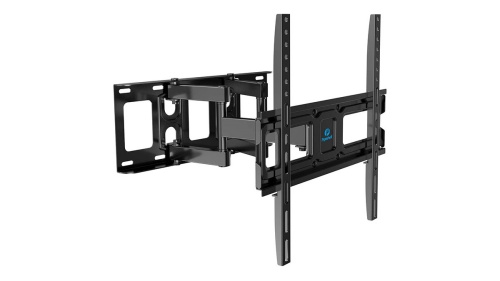
Some TV stands are also quite wide, adding distance in the same way wall mounts can. Some mounts push the TV out a few extra inches from the wall.
This factor isn’t always included in someone’s decision, but we consider it essential, in case your room is too small.
Choosing a TV Size
Now that you know what to look for, it’s time to delve into the formulas that help you calculate the size of TV and the distances needed to accommodate them.
You can use a formula to calculate how far you should be from a specific size TV. The ideal screen ratio for a 4K TV is 1.4 times a TV’s diagonal measurement, which is the screen size.
For example, if you’re thinking about getting a 60-inch TV, the ideal viewing distance is between seven and eight feet away. That’s because 60 x 1.4 is 84, and 84 inches is precisely seven feet.
You can set up a 40-degree viewing angle with any 4K TV you own by following this rule.
Samsung itself has some pre-calculated guidelines for four main sizes.
- 5.5 feet for 55-inch TVs
- 6.5 feet for 65-inch TVs
- 7.5 feet for 75-feet TVs
- 8.5 feet for 85-inch TVs
Samsung uses a formula of Recommended Distance x 1.2 instead of 1.4 but doesn’t specify the screen’s resolution.
Another formula you can use comes from TV manufacturers. They recommend dividing your viewing distance by 2.5 instead. An example would be 96 divided by 2.5, which is 38. This means you need a screen size of 38 inches or less.
This formula is used for 480p screens. For FHD TVs, divide the viewing distance by 1.6. A distance of 96 inches divided by 1.6 is 60 inches.
For 4K TVs, you can use the screen’s diagonal measurement as the optimal distance is. A 90-inch TV can still be comfortable to watch shows on, even at 90 inches away. If you’re not too sure, dividing by 0.78 also works. Therefore, the 96-inch TV will work between 96 and 123 inches away.
Both formulas offered above help determine a base distance or size, but that’s not all you should think about when choosing the TV size.
Other Things to Consider
Even if you manage to calculate the ideal distance and size, TVs are still expensive. An 80-inch 4K TV will cost more than an FHD or 2K TV of the same size. If you can’t afford a 4K TV that large, you can always get something smaller.
People must factor in pricing unless they can easily afford any large 4K TV available. Even then, there’s also the TV’s style and type.
OLEDs, QLEDs, and other screens exist, but they don’t all come in the size you might want. It’s vital to search for the proper size after determining if you want an OLED 4K TV or a QLED FHD TV. Sometimes, they just don’t make a specific TV that big or small.
The search for a perfect TV can take very little time or result in a deep online store dive, but it’s worth it in the long run for your viewing (and financial) comfort.
Bigger Tends to Be Better
Today, the saying “bigger is better” seems to apply to most TVs sold on the market. Many people prefer a larger TV, especially if they have enough room to watch shows on it comfortably. Manufacturers have released ways to calculate the best viewing distance for different sizes of TVs.
Using the formulas above, you can determine what size TV your room can handle. However, there’s much more than just how far away you’re sitting. Your resolution and room conditions and budget will affect your choice as well.






